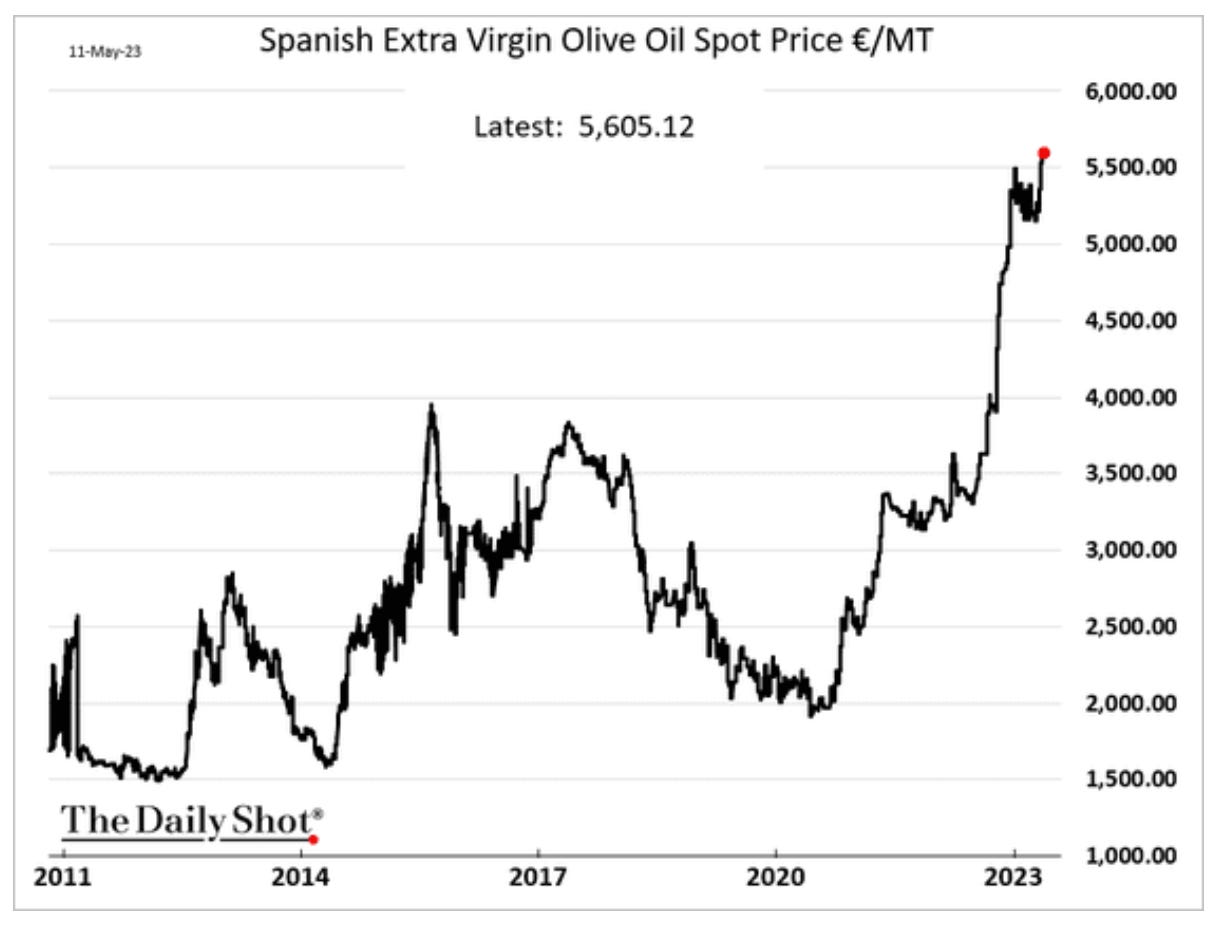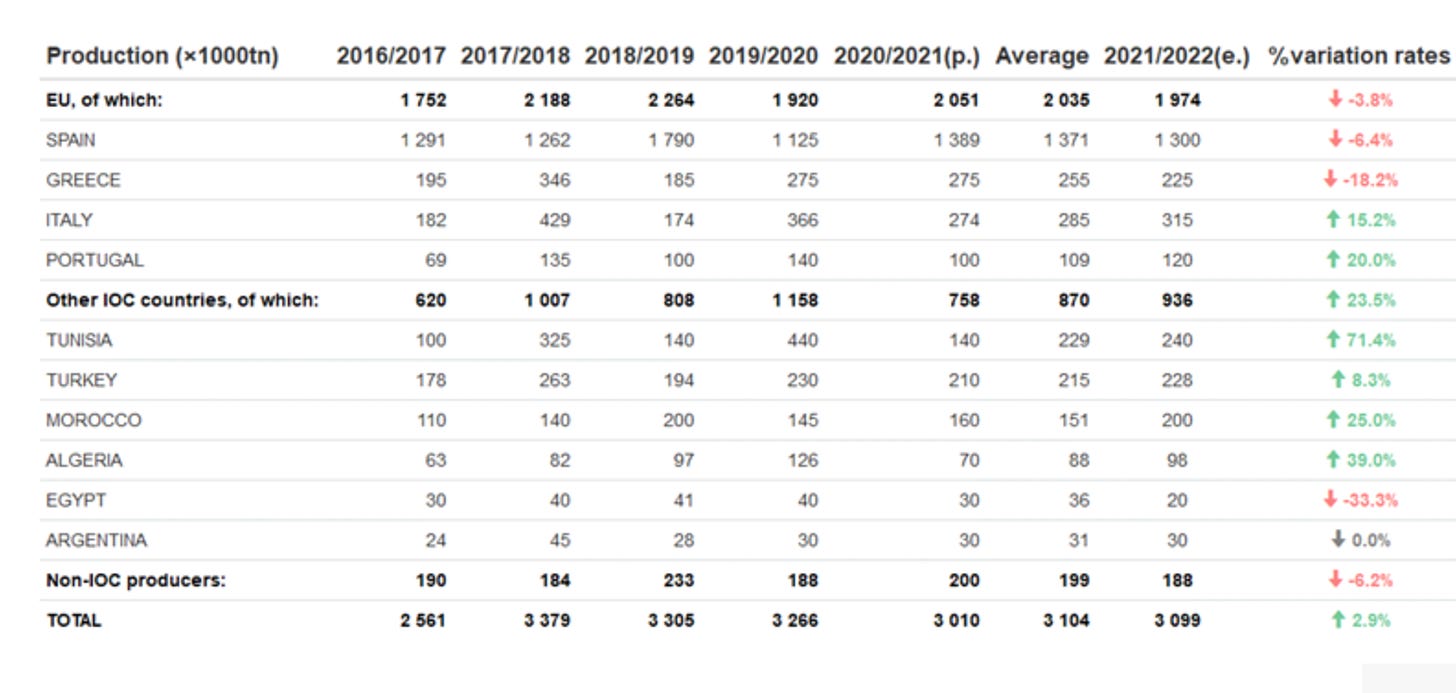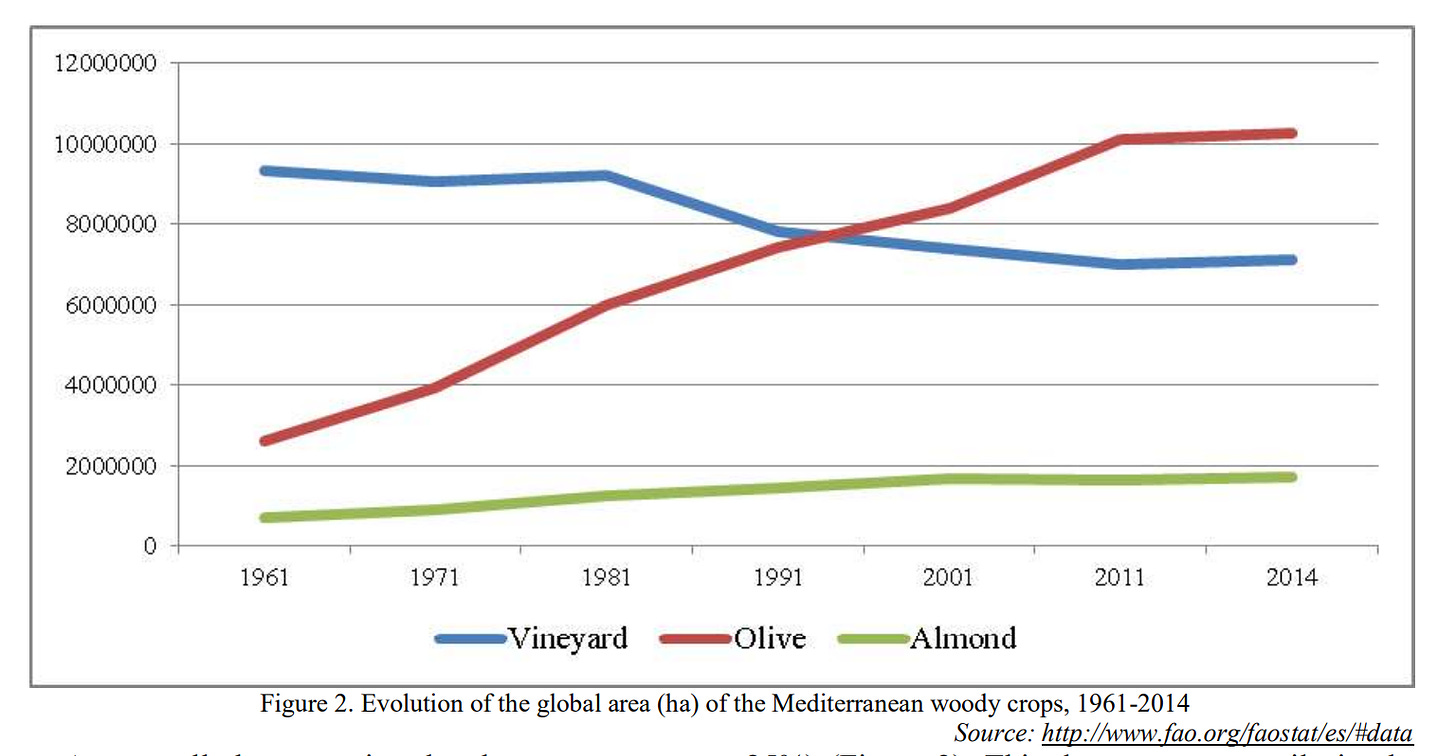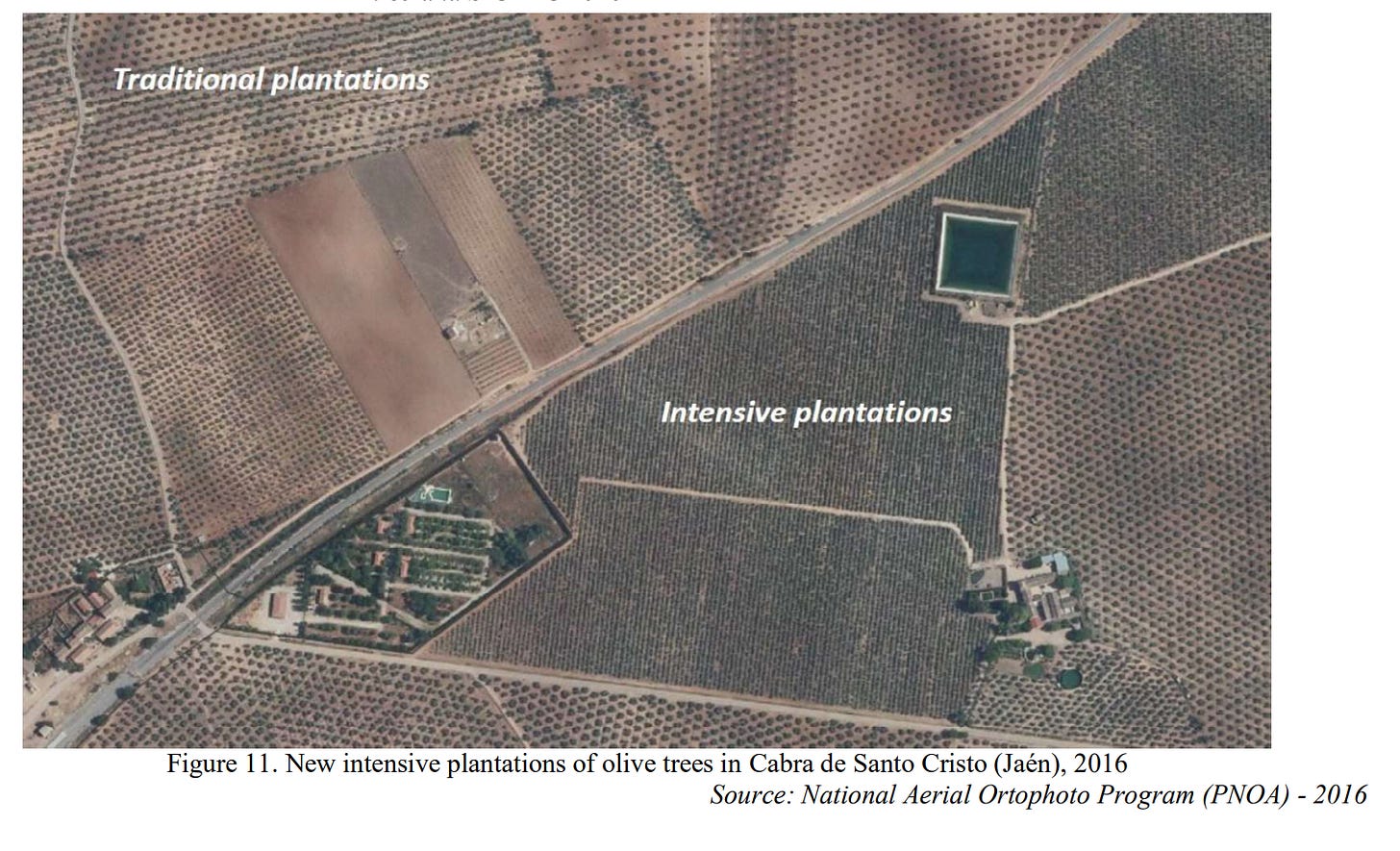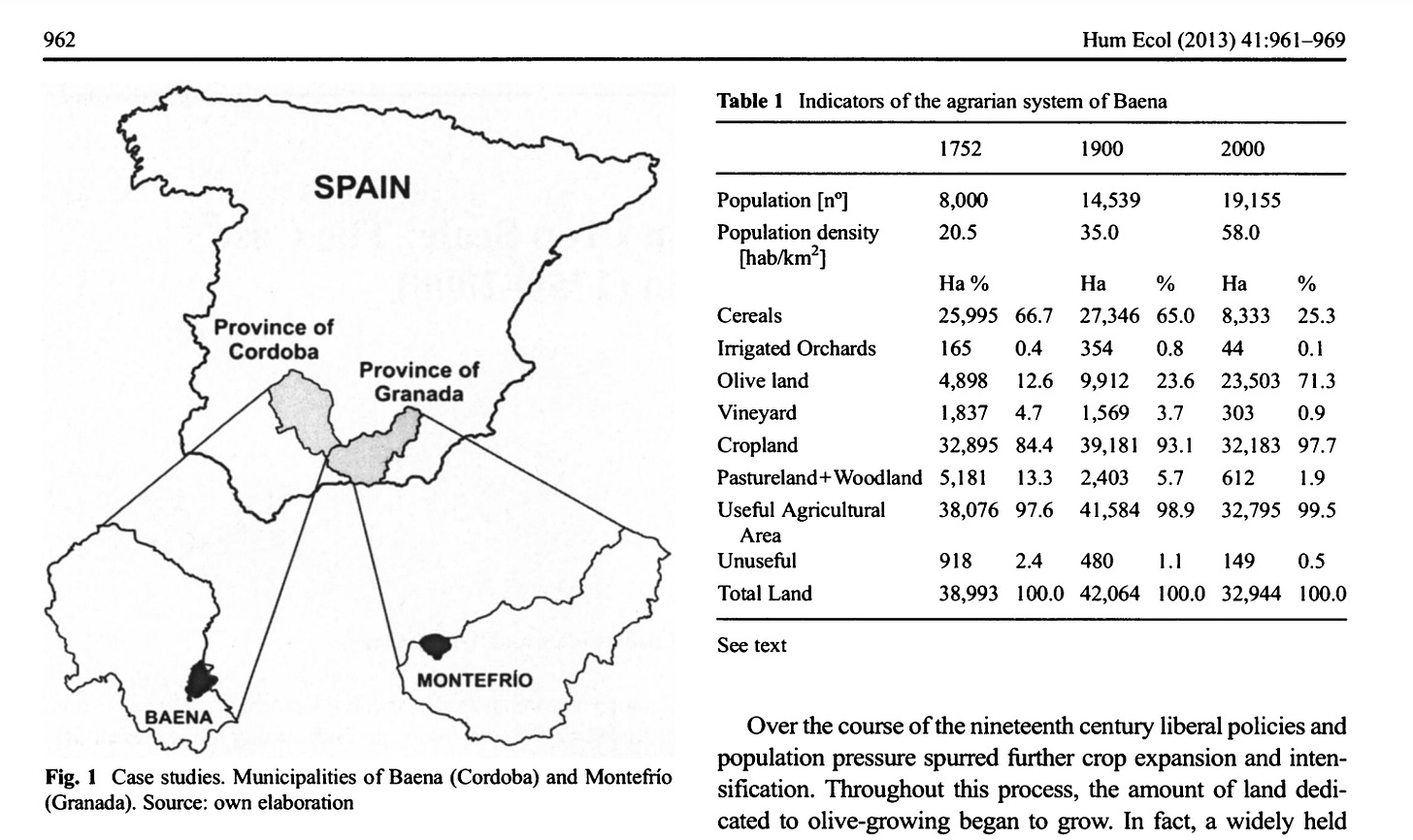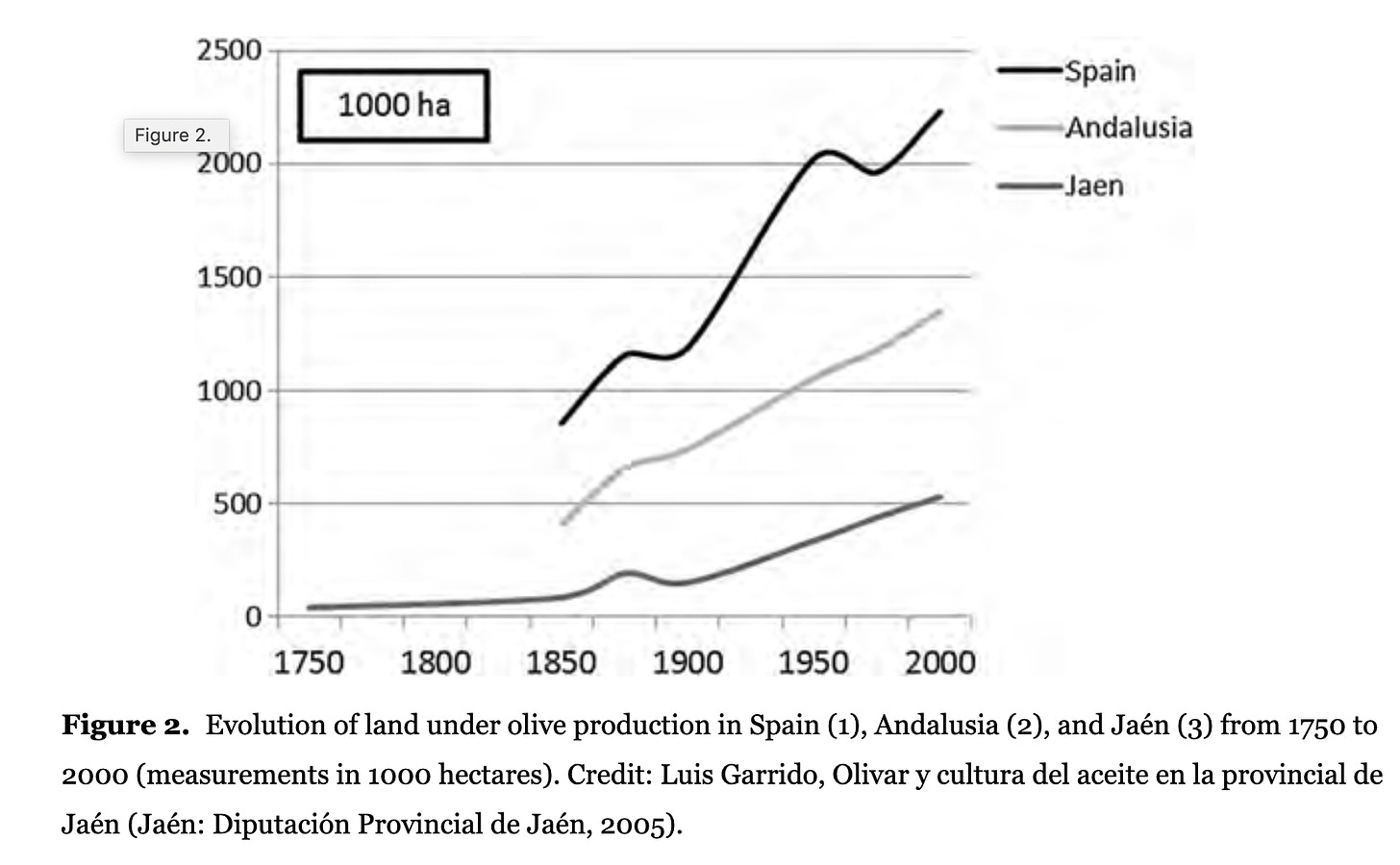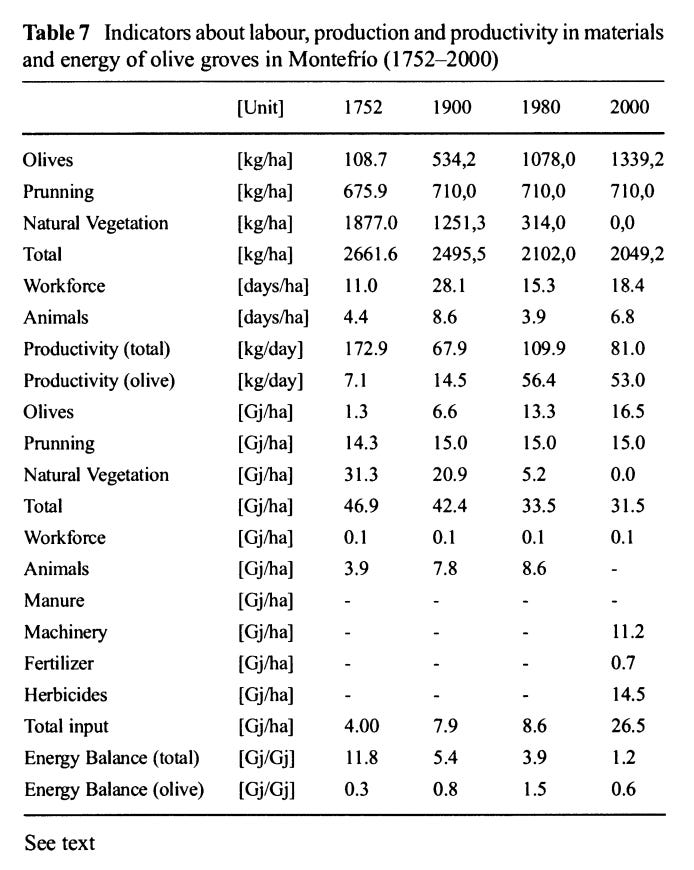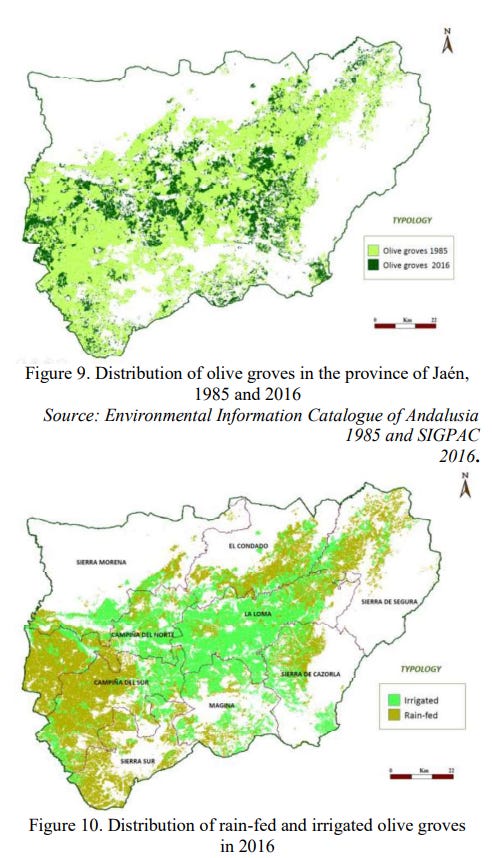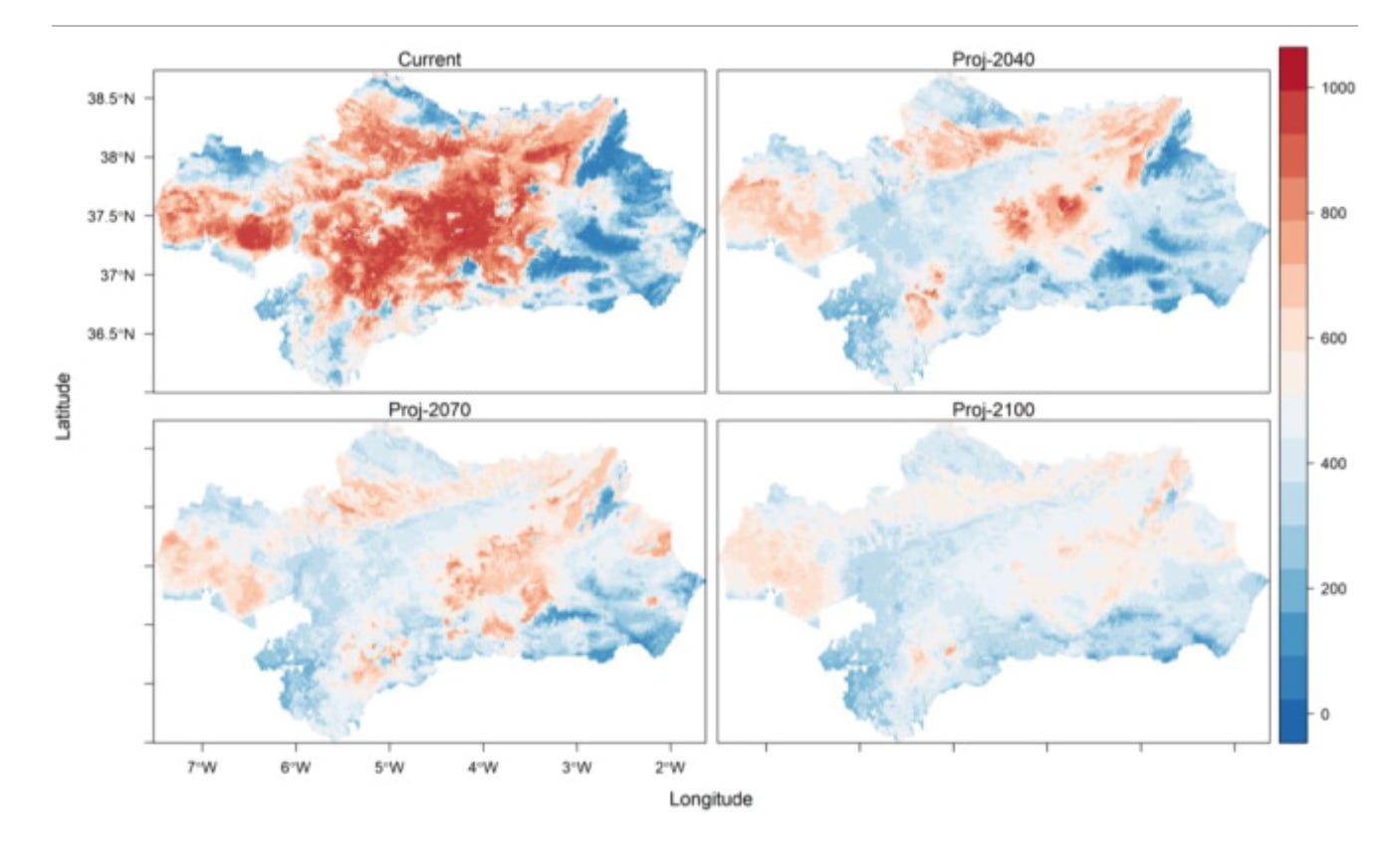Chartbook 214 The global olive grove - How climate change is challenging Europe's olive garden
I was alerted to the tension n the global olive oil market in early 2023 by this graph from Daily Shot.
Cam Abadi liked the story, so we picked it up for the Ones and Tooze podcast. Check out the latest episode here:
As usual, Cam’s questions took me on a journey of discovery into the economic history of a truly ancient element of Europe’s culinary civilization. But also into the heart of some fascinating contemporary developments.
Olives have been cultivated around the Mediterranean for 8 millennia or more. The Latin name for the plant is simply. Olea europaea - European oil. From the production data today you can see why. Still today, Europe dominates global production.
In the ancient world, olives were a key part of the diet. If Rome can be assumed to follow the traditional peasant diet of the region, then olive oil may have accounted for as much as 30 percent of all the calories consumed. Together with the necessary presses and the amphora to store the oil, olive oil constituted a large and dynamic part of the Roman economy. Major Roman oil producing regions in Libya and Spain would have required hundreds and thousands of amphorae per year to hold the oil they exported.
For the subsequent centuries olive oil continued to be a key part of Mediterranean social and economic life. And then came a gigantic late-20th-century expansion. Between 1960s and the 2010, Europe became a global olive grove, with hectarage expanding almost fourfold.
Source: Garrido Almonacid, A. & Sánchez Martínez, J. D. 2018
And at the time same time cultivation because vastly more intensive. This is best captured by this striking side by side photograph of traditionally spaced plantations. and 21st-century high-intensity plantation.
Though we might generally associate olive oil with Greece and Rome, in the modern industry Spain is the dominant force. Over the course of the 20th century, large parts of Southern Spain have been given over to olive monoculture.
Source: Juan Infante-Amate and Manuel González de Molina 2013
Over the course of the 20th century the extent of olive groves in Andalusia doubled to almost 1.4 million hectares.
Source: Amate et al 2013
At the same time, between 1900 and 2000 the yield per hectare increased by more than 150 percent.
As Infante-Amate shows in a wonderful history of Spanish olive cultivation, the modern Spanish industry emerged from a period of deep stagnation under Franco:
The reasons for the emergence of the olive oil industry from the crisis and its strong growth since the 1980s can be summarised as follows: the industrialisation of agriculture and the modernisation of mills; the expansion of oil consumption to other areas; and, finally, participation in the Common Agricultural Policy. Spain has received the largest share of the European subsidies for olive oil production, which rose from 160 million euros in 1966 to over 2300 million by the year 2000 (EC, 1997).
In a good year the 66 million olive trees covering 550,000 ha in the Spanish region of Jaén alone produce enough oil to account for 20 percent of global supply.
Olive cultivation is another of the expansive “primary industry” complexes like West African cocoa and Sahel gold that are fundamental to sustaining and driving the expansion of our material civilization.
In the case Eurocentric olive farming this relies on heavy inputs of capital, labour, technology and natural resources, notably water. As the literature review by Banias et al spells out the input-output relations:
for the production of 1 L of extra virgin olive oil, 433.6 g of fuel and 3900 L of water are consumed.24 For the cultivation of one acre of olive grove, 64.8 MJ is required. Fertilizing and treatment with insecticides requires 247 MJ and 3317 MJ per ton of olives, respectively. The use of machinery is responsible for the emission of 164.9 kg of CO2, 12.1 g of SO2 and 31.9 g of NOx, per ton of olives, respectively. The produced waste is another important parameter in farming, including mainly the pruning residues, which are estimated to comprise approximately 3 tons per hectare of olive cultivation.31-35 Regarding the manufacturing phase, the wastes produced in the mill are considered to be the dominant environmental issue. A medium-sized mill receives 10–20 tons of olives per day and produces 0.5 and 1.5 m3 olive mill wastewater per ton of olives.24, 36, 37 The water used either for washing the olives or before centrifugation further increases the liquid waste production, which may reach levels of 54 L of water for each litre of extra virgin olive oil produced.29 The production of olive oil also includes energy and fuel consumption. Specifically, 1493 kJ is consumed for each ton of processed olives30 and 158.2 kg of CO2 are emitted.30 The processes that aim to reduce the bitter taste of olive are those that are the most responsible for increased emissions.38
Source: Garrido Almonacid, A. & Sánchez Martínez, J. D. 2018
Modern olive oil production is a sensitive node in a ramified supply chain and that is the cause of the recent spike in prices. The key producing region of Andalusia is going through a sustained and devastating drought.
Longer term climate forecasts are even more devastating. Changes in temperature, evaporation, soil PH and the reduction in rainfall in the autumn are predicted to drastically shrink the regions of Andalusia that are suitable for cultivation of any of the well-known olive varietals (red zone).
Salvador Arenas-Castro a c, João F. Gonçalves b, Manuel Moreno d, Rafael Villar 2019
At least according to this modeling exercise, this does not mean the end of olive oil cultivation in Spain. But it does predict a substantial reduction in crop yields over the coming century. In the millennia-old history of the olive we are entering a new chapter.
***
Thank you for reading Chartbook Newsletter. It is rewarding to write. I love sending it out for free to readers around the world. But it takes a lot of work. What sustains the effort are voluntary subscriptions from paying supporters. If you are enjoying the newsletter and would like to join the group of supporters click below. As a token of appreciation you wil receive the full Top Links emails several times per week.




